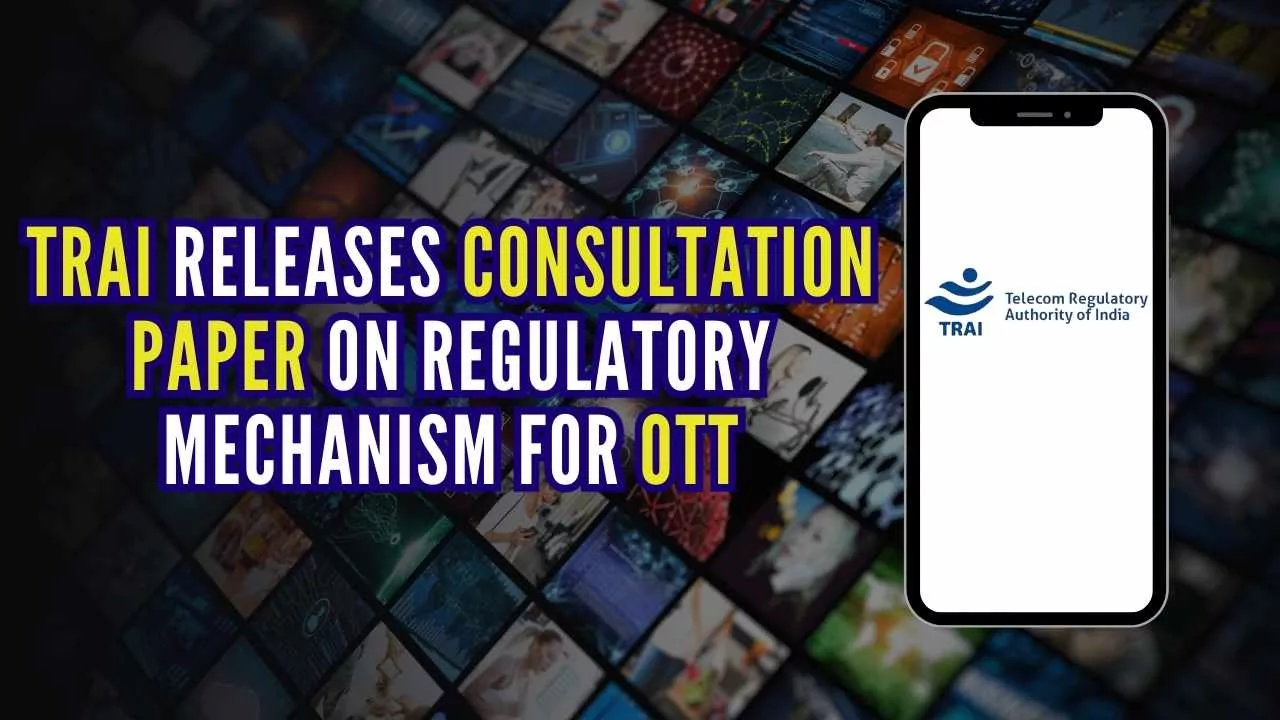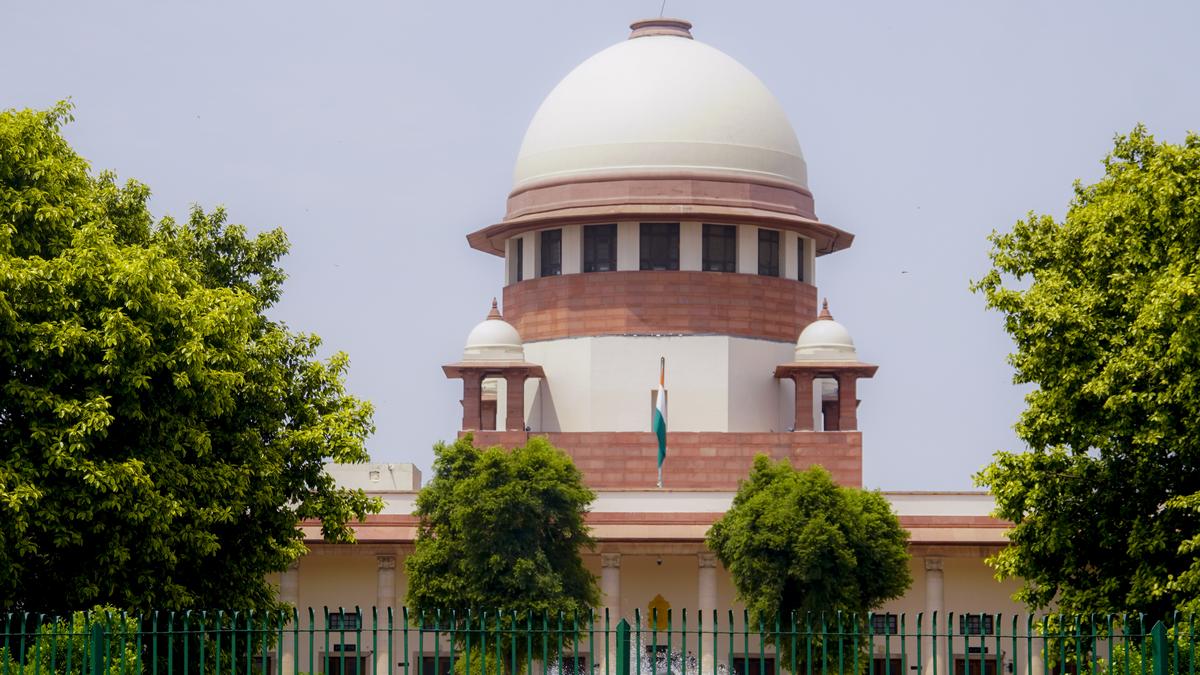
Copyright infringement not intended
Picture Courtesy: www.pgurus.com
Context: OTT communication services, such as WhatsApp, Skype, and Zoom, have been under the scanner of the Telecom Regulatory Authority of India (TRAI) for a while. The regulator has sought views from various stakeholders on whether these services should be subject to the same rules and regulations as the traditional telecom operators.
Details
- The Telecom Regulatory Authority of India (TRAI) issued a consultation paper in July regarding the regulation of over-the-top (OTT) communication services. This move came after a Parliamentary Standing Committee asked the Department of Telecom (DoT) to consider the possibility of selectively banning certain OTT services due to concerns about their widespread impact and potential unrest.
- The consultation paper specifically targeted OTT communication services like WhatsApp, Signal, Meta (formerly Facebook), Google Meet, Zoom, and others, excluding content-based OTT platforms like Netflix and Amazon Prime.
Note: Content-based OTT regulation falls under the jurisdiction of the Ministry of Information and Broadcasting (MIB) rather than TRAI.
Arguments in favor of the proposal
- The conflict primarily revolves around whether OTT communication services should be regulated and charged for using the telecom infrastructure built by traditional Telecom Service Providers (TSPs). The TSPs argue that OTT services have eroded their revenues because these platforms offer a range of services, including multimedia messaging, instant messaging, voice calls, and video calls, over the Internet, thereby bypassing traditional telecom services like voice calls and text messages.
- TSPs claim that OTT communication service providers do not contribute to the government's revenue and do not invest in network infrastructure. They assert that OTT services benefit from the existing telecom infrastructure without making any substantial contributions to its development and maintenance.
Arguments against the proposal
- The Internet and Mobile Association of India (IAMAI) opposes the idea of cost-sharing, arguing that it could lead to double charging for the same service, as consumers already pay TSPs for data consumption. This, they believe, would raise the cost of internet usage and violate the principles of net neutrality.
- The Internet Freedom Foundation expresses concerns about the proposal to selectively ban OTT services, emphasizing the importance of safeguarding freedom of expression and the right to access information.

Regulation of Over-the-Top (OTT) services
About
- The regulation of Over-the-Top (OTT) services has become a significant global issue as these digital platforms have gained immense popularity for delivering content and communication services over the Internet.
- OTTs encompass a wide range of applications, including messaging apps, video streaming platforms, and voice-over IP (VoIP) services. Their rise has disrupted traditional telecom and broadcasting industries, leading to debates on the need for regulatory mechanisms.
Features of Over-the-Top (OTT) services
Diverse Services
- OTT platforms offer an extensive range of services, making them versatile and appealing to users. These services encompass instant messaging, video calling, voice calling, file sharing, and content streaming. Users can access a wide variety of functionalities within a single application or platform.
- This diversity of services enhances user convenience and provides a comprehensive digital experience, consolidating multiple communication and entertainment needs into one platform.
Internet-Based
- OTT services rely on internet connectivity to function. They leverage data networks to transmit data packets, enabling real-time communication, multimedia content delivery, and other services.
- Internet-based delivery allows OTT providers to reach users regardless of geographical location, as long as they have an internet connection. This flexibility contributes to the global expansion of OTT services.
Global Reach
- One of the defining features of OTTs is their global accessibility. Users can access these services from virtually anywhere with internet access, transcending national boundaries.
- This global reach makes OTT platforms highly scalable and influential, enabling them to attract large user bases and expand their market presence worldwide.
Disruption
- OTTs have brought about a significant disruption in traditional business models, particularly in the telecommunications and broadcasting sectors. These disruptions have challenged established players in the industry.
- Telecom operators, for instance, have seen their traditional revenue streams, such as voice calls and text messages, impacted by OTT services that offer similar functionalities over the Internet for lower costs or even for free.
- In the broadcasting sector, OTT platforms have changed the way content is delivered, providing on-demand streaming services that compete with traditional cable and satellite TV providers.
Significance of Regulatory Mechanisms for OTTs
Consumer Protection
- Regulatory frameworks can serve as safeguards to protect consumers' interests when using OTT services. They can establish standards for data privacy, security, and user rights.
- Consumer protection regulations can ensure that OTT providers handle user data responsibly, maintain service quality, and adhere to fair business practices. This helps in building trust among users.
Fair Competition
- Regulatory measures aim to establish a level playing field between traditional telecom operators and OTT providers. This is crucial to prevent unfair practices that could hinder healthy competition.
- Fair competition regulations may address issues like anti-competitive behaviour, market dominance, and pricing strategies. By doing so, they foster an environment where both traditional and OTT players can compete based on merit.
Revenue Generation
- Governments can generate revenue through regulatory mechanisms, including licensing fees and taxes imposed on OTT services. These funds can contribute to public resources and infrastructure development.
- Revenue generation also ensures that OTT providers contribute their fair share to the economy, similar to how traditional telecom operators pay fees for spectrum usage and other regulatory obligations.
Overall, regulatory mechanisms for OTT services aim to strike a balance between fostering innovation and competition while safeguarding consumer interests and ensuring that the industry contributes to government revenue. Achieving this balance is crucial for the sustainable growth and development of the digital ecosystem in the context of OTT services.
Steps Taken by India
- India's proactive steps in considering regulatory measures for OTT services, particularly OTT communication services, reflect the government's commitment to addressing the evolving digital landscape.
TRAI Consultation
- The Telecom Regulatory Authority of India (TRAI) initiated a consultation process by releasing a comprehensive consultation paper in July. This paper sought input and feedback from a wide range of stakeholders regarding the regulation of OTT communication services.
- The consultation paper serves as a key starting point for a structured discussion on the regulatory aspects of OTT services. Stakeholders were encouraged to provide their insights, data, and recommendations to contribute to the regulatory framework's development.
Scope Clarification
- India has taken a significant step by distinguishing between OTT communication services and content-based OTT platforms. This differentiation is vital for ensuring that the regulatory approach is tailored to the specific characteristics and concerns of each category.
- Content-based OTT regulation falls under the purview of the Ministry of Information and Broadcasting (MIB), highlighting the government's intent to address these services separately from communication-focused OTTs.
Stakeholder Engagement
- TRAI's active engagement with various stakeholders is a crucial aspect of the regulatory process. By inviting feedback and opinions from telecom service providers, OTT providers, consumer advocacy groups, and other relevant parties, India aims to gather diverse perspectives.
- Involving stakeholders ensures that the regulatory framework considers the interests and concerns of all parties involved, contributing to a more balanced and informed approach.
Key challenges related to regulating Over-The-Top (OTT) services
Net Neutrality
- Balancing regulation with net neutrality is a complex challenge. Net neutrality is the principle that all internet traffic should be treated equally by internet service providers (ISPs).
- Regulating OTT services while preserving net neutrality can be tricky because some forms of regulation might give preferential treatment to certain types of content or services, potentially violating the principles of net neutrality.
- Striking the right balance between ensuring fair competition and preventing discrimination against certain services is essential in this context.
Global Nature
- Many OTT services operate on a global scale, making regulation challenging due to jurisdictional issues. Different countries may have varying regulations, and coordinating international efforts to regulate OTTs can be complex.
- Conflicts might arise when one country's regulations clash with another's. Finding common ground and establishing international standards or agreements can help address this challenge.
Innovation
- Overregulation can indeed stifle innovation in the digital ecosystem. OTT services have played a significant role in driving innovation in the technology and entertainment sectors.
- Excessive regulation could discourage new players from entering the market and inhibit the development of new services. Striking the right balance between regulation for consumer protection and fostering innovation is essential.
- Regulatory bodies should adopt flexible approaches that adapt to the evolving nature of OTT services and their impact on the industry.
Ways forward to address the challenges associated with regulating Over-The-Top (OTT) services
Comprehensive Framework
- Developing a comprehensive regulatory framework is essential for providing clarity and guidance to both OTT service providers and consumers. Such a framework should be flexible enough to adapt to evolving technologies and market dynamics while addressing the concerns and interests of all stakeholders, including consumers, content creators, and service providers.
- Balancing innovation and competition within this framework is crucial for a thriving OTT ecosystem.
International Cooperation
- Collaborating with international counterparts is a prudent step, given the global nature of OTTs.
- By working together with other countries and international organizations, India can help establish common standards and regulations that facilitate cross-border operations while ensuring compliance with local laws and regulations. This cooperation can also help in addressing issues such as data sovereignty and jurisdictional conflicts.
Consumer-Centric Approach
- Prioritizing consumer rights, data privacy, and quality of service is essential for building trust in the OTT ecosystem.
- Regulations should aim to protect consumers from any potential abuses or discriminatory practices by OTT service providers.
- Ensuring transparency, fair pricing, and data protection should be integral components of the regulatory framework to safeguard the interests of users.
Continued Dialogue
- Maintaining an open and ongoing dialogue with industry players and consumer groups is critical for staying informed about the evolving OTT landscape.
- Regular consultations and feedback from these stakeholders can help regulators make informed decisions and adapt regulations in a timely manner. This approach ensures that the regulatory framework remains relevant and effective as technology and consumer preferences evolve.
.jpg)
Conclusion
- The regulation of OTT services in India is a dynamic process driven by the need to balance various interests while ensuring consumer protection and fair competition. The way forward requires a well-thought-out, flexible, and internationally coordinated approach to address the challenges posed by this rapidly evolving digital landscape.
Must Read Articles:
GOVERNMENT REGULATION OF OTT PLATFORMS: https://www.iasgyan.in/ig-uploads/pdf/info_govt_regulation_ott_platform.pdf
DIGITAL PUBLISHER CONTENT GRIEVANCES COUNCIL: https://www.iasgyan.in/daily-current-affairs/digital-publisher-content-grievances-council
TELECOM REGULATORY AUTHORITY OF INDIA (TRAI): https://www.iasgyan.in/daily-current-affairs/trai
|
PRACTICE QUESTION
Q. What are the key features and significance of Over-The-Top (OTT) services in the digital landscape, and how do they contribute to the regulatory problems and challenges associated with their global operation? What are some proposed strategies for addressing these challenges and shaping the way forward in regulating OTT services effectively?
|
https://epaper.thehindu.com/ccidist-ws/th/th_delhi/issues/52302/OPS/GMLBP1GHQ.1.png?cropFromPage=true
Array
(
[0] => daily-current-affairs/regulatory-mechanisms-for-otts
[1] => daily-current-affairs
[2] => regulatory-mechanisms-for-otts
)









